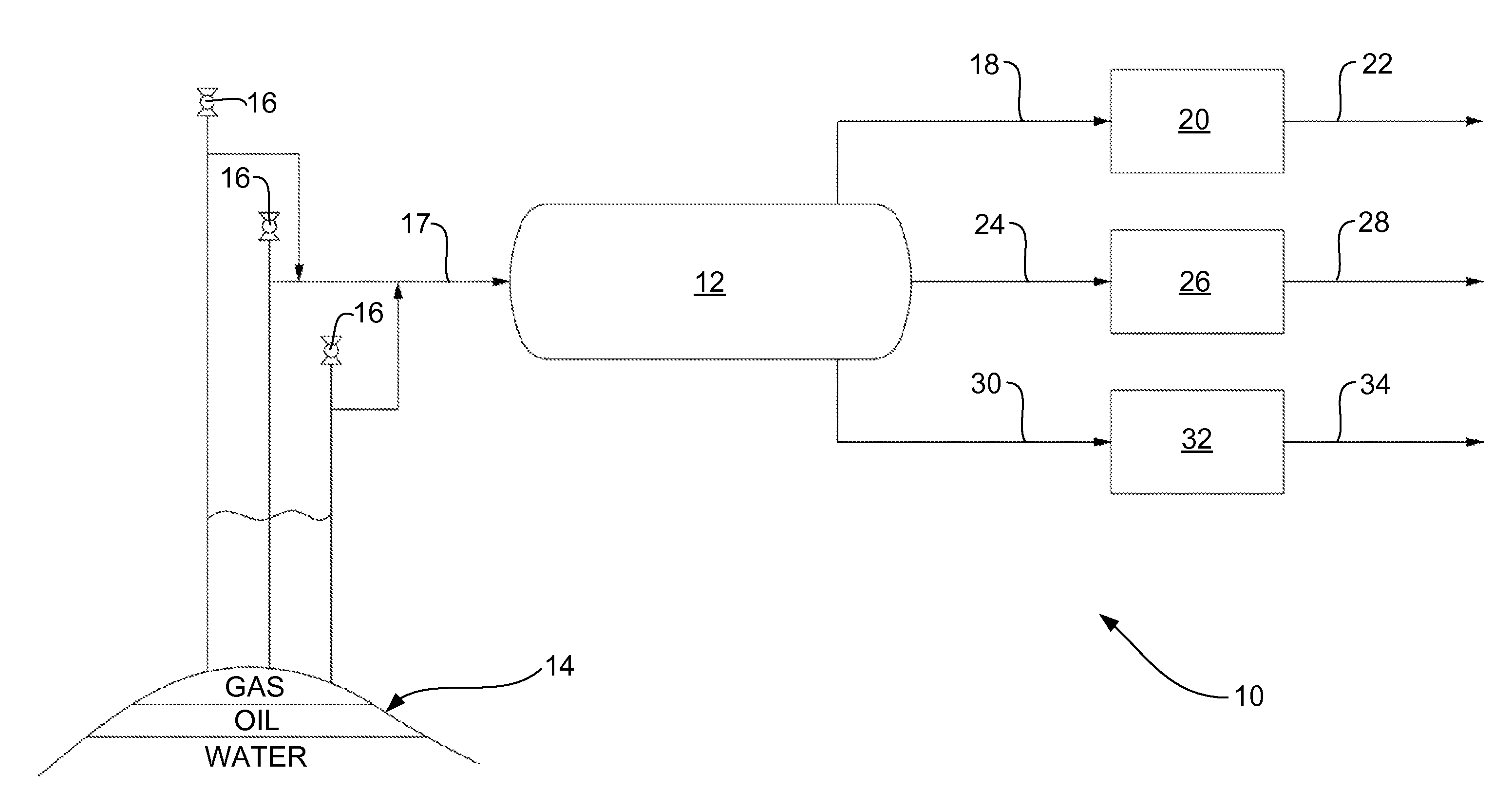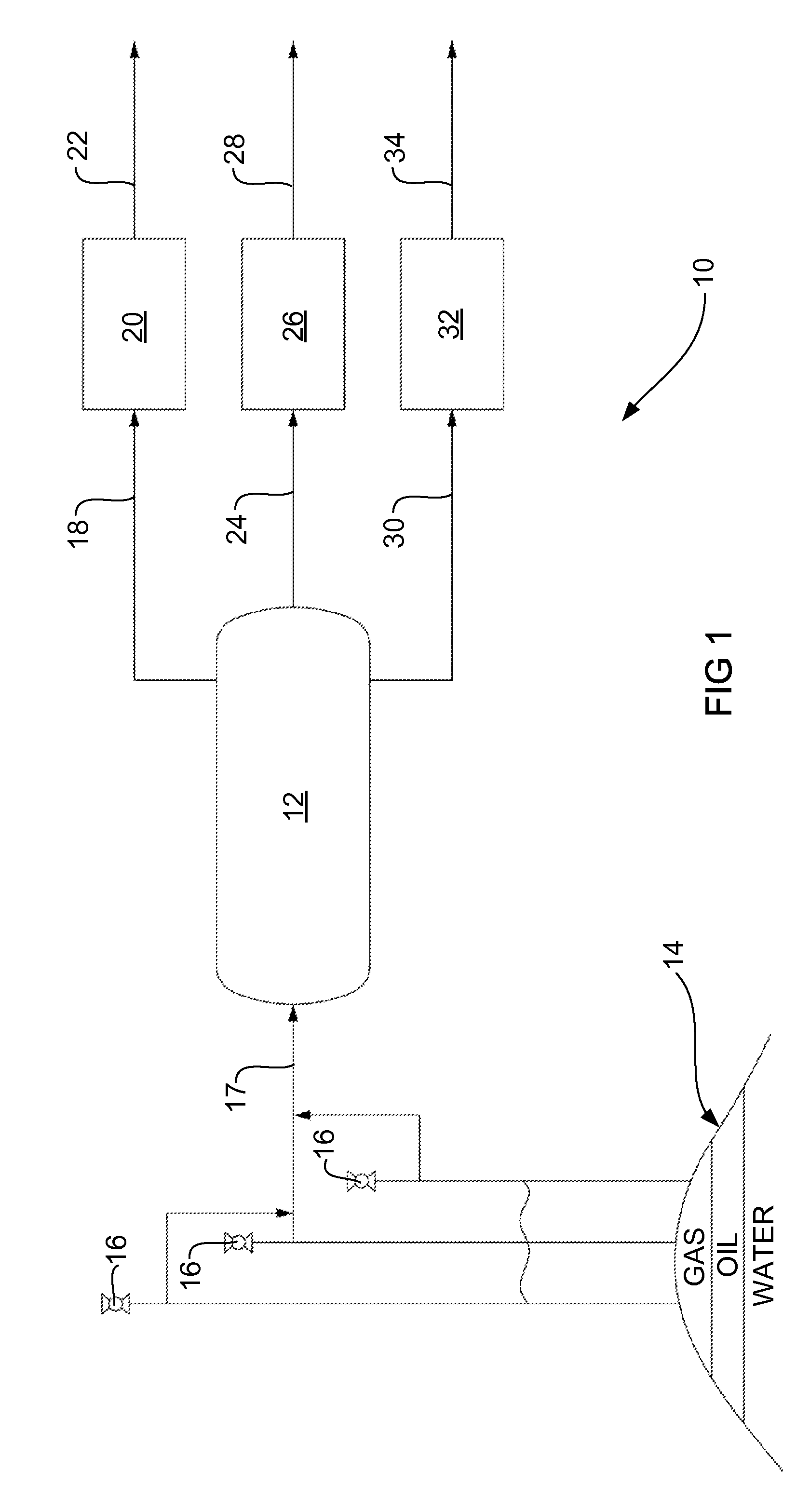Separation Process
a technology of separation process and gas bubble, which is applied in the direction of separation process, electromechanical device, water/sludge/sewage treatment, etc., can solve the problems of avoiding the requirement, increasing the probability of oil droplets and contaminants from the water stream to be removed, and avoiding significant cost and downtime. , the probability of gas bubbles rising, the effect of increasing the number of gas bubbles
- Summary
- Abstract
- Description
- Claims
- Application Information
AI Technical Summary
Benefits of technology
Problems solved by technology
Method used
Image
Examples
Embodiment Construction
[0061]FIGS. 1 to 4 illustrate a treatment process for produced water resulting from a production separator 12 used in a first separation stage 10 in the course of oil and / or gas production in the petroleum industry.
[0062]Referring to FIG. 1, there is shown a basic flow diagram providing the general flow paths of materials in the first separation stage 10 of a well head product extracted from an oil / gas well 16. Preceding the first separation stage 10, a well head oil product is extracted from an oil and / or gas reservoir 14 via an oil / gas well 16. The well head product typically comprises a mix of oil, gas, water and other contaminants. The well head product is fed from the oil / gas wells 16 to the production separator 12 through inlet stream 17 to undergo the first separation stage 10.
[0063]The illustrated production separator 12 is a large tank held at or above atmospheric pressure. The well head product is fed into the production separator 12 and allowed to settle for a settling pe...
PUM
| Property | Measurement | Unit |
|---|---|---|
| diameter | aaaaa | aaaaa |
| diameter | aaaaa | aaaaa |
| diameter | aaaaa | aaaaa |
Abstract
Description
Claims
Application Information
 Login to View More
Login to View More - R&D
- Intellectual Property
- Life Sciences
- Materials
- Tech Scout
- Unparalleled Data Quality
- Higher Quality Content
- 60% Fewer Hallucinations
Browse by: Latest US Patents, China's latest patents, Technical Efficacy Thesaurus, Application Domain, Technology Topic, Popular Technical Reports.
© 2025 PatSnap. All rights reserved.Legal|Privacy policy|Modern Slavery Act Transparency Statement|Sitemap|About US| Contact US: help@patsnap.com



